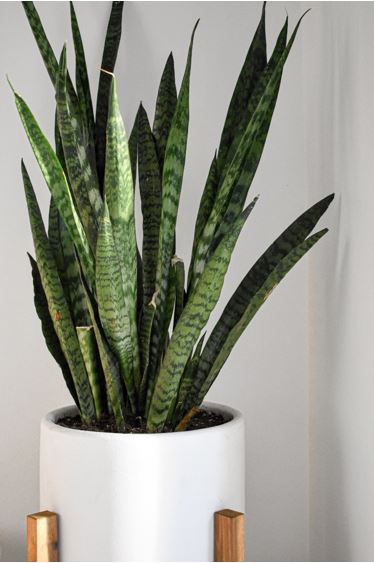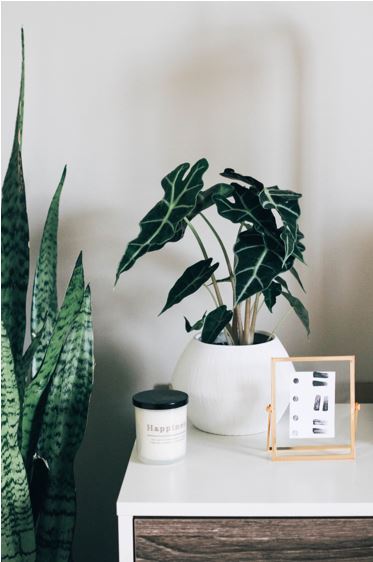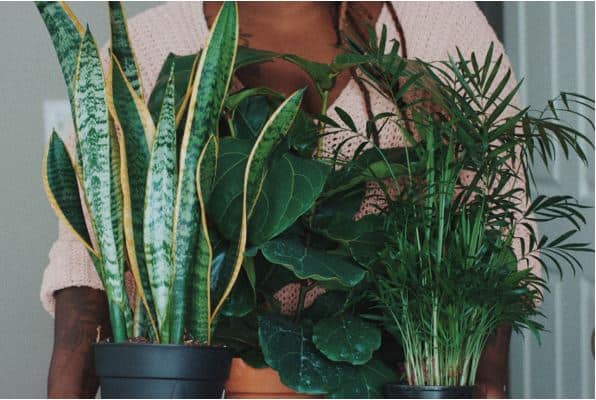Snake Plant, also known by its original name Sansevieria, is one of the best houseplants you could get. We are not exaggerating.
This is one of the best plants for homes and indoor spaces. You might be wondering why this could be. Snake Plants are one of the most tolerant plants out there, if not the most.
A straightforward and means-business kind of plant, Snake Plants don’t require much care. You can leave them alone for weeks at a time, and they won’t look unhappy about it.
This might sound weird at first to people who don’t know about it, but this is how fascinating the Snake Plant is. They would look fresh even after you haven’t cared much.
Low lights, complete dryness, insects and pests, and other challenges? They don’t have any effect on these tough plants. They will keep the air inside your home clean while also removing toxins. This sounds too good to be true, right? We totally agree.
So, if you are planning to get the perfect houseplants, AKA Snake plants, here’s the complete guide on how to grow and care for them. You might already think that you know enough about the care, but it doesn’t hurt to read a little to know more, right? Let’s dive right in.
How to grow and care for Snake Plant
Snake Plants are one of the toughest plants out there, which can grow in the most random of conditions and continue to thrive. You would be surprised to learn that these plants are nearly indestructible.
They make excellent house companions, and we recommend them right away. Caring for them is a walk in the park. It is that easy and effortless.
How to grow
Growing snake plants is very easy. One of the most common and easiest methods is to grow them through cuttings. You can get cuttings from wherever you want. Ensure that they were taken from a healthy plant.
If you are using the cuttings method, cut two to three inches of a leaf and pot them in about an inch-deep soil. Use appropriate soil that is suitable for snake plants. The cuttings must face upwards as that is the direction they are going to grow in.
The most important thing to remember when using the cuttings method is that they can easily rot and get ruined if you don’t take care of them. A free-draining soil is a solution to that.
Dividing the snake plants is also another efficient and effective method that is equally easy and convenient as using cuttings.
When you use the dividing method, you can get a sharp knife and easily remove the roots. Do it carefully so you can replant the divided roots easily. You can easily divide the snake plants when repotting.
Alternatively, you can choose and select the new roots that emerge from the soil. These can be planted independently and will work well.
The main condition is using a free draining soil in this method as well as it is the key.
Once you have planted them and started growing, it is in autopilot, as it is an easy task from thereon.
Best time to grow?
The best time to propagate snake plants is in Spring. This will help in growing them quickly in the summer. Your new propagated plants will take the boost in Summer.
Light and placement
Sansevieria plants or Snake plants don’t require much light. The preferable condition is where the plants can get regular natural light, preferably direct sunlight. They thrive in direct sunlight and adapt really quickly to it.
If you don’t have any place where it can get direct sunlight, you can definitely put these plants in a dim spot as well as they are incredibly tough and can adapt.

If you are looking for the ideal situation, the partial sun will work the most efficiently for snake plants. Brighter or dimmer areas work as well, but the partial sun will help in making the plants thrive. Otherwise, the plants can get a little moody and dull.
Containers
The snake plant is the most ideal container plant that can grow in any kind of container. You can grow the plant in groups or individually, but they thrive in groups.
You can place the containers you are growing on the floor or in windows or tabletops. These plants are drought resistant, so dryness won’t bother them much, but we still prefer getting good drainage containers.

A terracotta pot would suit these plants really well as they won’t trap any water inside and let the standing water outside.
Soil
A well-drained potting mix is a way to go for Snake plants. A loose, sandier soil works perfectly for these plants as the potting medium will be low in peat, which will ensure longevity and drainage.
If you are looking for a name, the all-purpose cactus potting soil is one of the ideal choices for soils to get.
The all-purpose cactus potting mix, or other similar mixes, will do well because they are prone to rot. That means that even if there’s rotting somewhere in the plant, it won’t let the rest of the plant rot further. A good drainage container would cover the rest for you.
Watering
Overwatering is the only way to kill this plant. By far, the only viable weakness of the plant, make sure you never overwater this plant. In moderate temperature, you can water it once every 10 days or so.
In cold weather, reduce the watering to only once a month because too much water would kill your plant.
In between watering, you must let the soil completely dry out. It will help the plants to use every last bit of water available and also will prevent overwatering.
When testing if these require water, you don’t really have to worry about it as these plants are drought-tolerant and can go for a long time between watering.
If you do want to water them regularly, check the soil up to an inch. If it is dry, water them. Remember not to overdo the watering in winter.
Temperature and Humidity
When it comes to Sansevieria, warm temperatures are ideal. Colder temperatures can hurt the plants, but because the plants are so tough, the effects will be less. Temperatures ranging from 70 to 90 degrees Fahrenheit serve Snake plants the best and boost the growth and health.
Fertilizer
Snake plants prefer a balanced fertilizer (10-10-10). Additionally, if you want to use something else, look for the mild cactus fertilizer or a balanced fertilizer diluted to fifty percent. There’s no need to fertilize in the cold weather.
Transplanting and repotting
Transplanting is required when you grow Snake Plants. These plants have strong roots, so when they outgrow the container, they can easily break the pots if they are weak. Always go for strong pots when choosing for snake plants.
Snake plants take their time when growing and would only require transplanting once or twice. When placed in direct sunlight, these plants grow quicker and might require replanting once a year.
If you do repot them, do it in the Spring as it is the suitable season for it. Always use fresh soil for it.
Toxicity
Before you get a snake plant, you must consider the fact that snake plants are poisonous to dogs and cats. In case you have any beloved pets, this plant is a hard no for you. Even for humans, the snake plant can get bad.
If they ingest the plant, humans can suffer through multiple problems including nausea and other problems. The problems can grow as well so make sure you are okay with all of this before getting a snake plant.
Conclusion
Snake Plants are proven to be more than just visual decoration pieces. They are useful, entertaining, and appealing at the same time. Add to that the little to no maintenance required and you’ve got yourself the perfect houseplant.

Also known as mother-in-law’s tongue, the Sansevieria plant has become incredibly famous in modern times as a houseplant which is desired in every household.
If you don’t have any pets, this plant might be the perfect choice for your house as it will liven up your entire house and it requires absolutely bare minimum care.
The fact that it filters out the air inside the room is a benefit not many people appreciate enough but it doesn’t stop this insanely tough plant from thriving.
We hope that this article has told you everything you needed to know about how to grow and care for a snake plant. They really are the easiest to grow and look after. And if you love them a bit, they will love you back more by providing you clean air and vibrance in your room.
